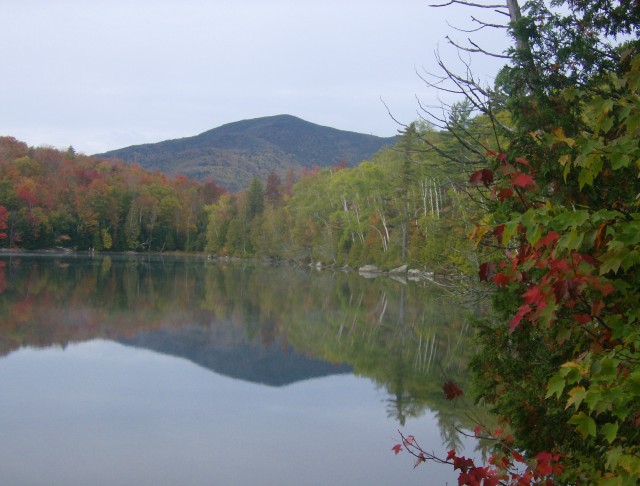Editor's note: As the cold-water season quickly descends, our blogger highlights a few extra tips that will come in handy when taking to our lakes to enjoy the fall foliage. Happy paddling!
Blog originally posted in 2013.
Not to set myself up with a very corny pun, but I am in the same boat as many of you — I don’t want to stop paddling either. Honestly, why should we? We don’t have to; we just need to be a bit more conscious of how we pursue the activity this time of year. Think about it, every day the water is getting cooler than it was the day before. The temperatures are going in the opposite direction than they did in the spring. However, with the proper head on your shoulders, consciousness of safety and the proper gear, there’s no reason we can’t get a couple more months of really good paddling under our belts.

So for those of you reading who might be new to the Adirondacks, here is a quick overview. The Adirondacks are over 6 million acres, which are broken up between public (state) and private land. Within those 6 million acres is over 2,300 ponds and lakes, 1,500 miles of rivers, and well over 30,000 miles of streams and brooks. Not all that can be paddled due to many factors, such as lack of an access point, private property, and/or not enough water to support boat travel. With that being said, there are numerous options within the Adirondacks, and the Saranac Lake region is home to a large range of paddling opportunities.
Paddling the Adirondacks is not only one of the most enjoyable outdoor activities in the mountains, it also offers unique views into the lives of all species of wildlife, including the rarely seen moose. Now that the summer is on the way out, the cold temperatures are sure to bring a morning frost or two relatively quickly. As soon as this happens, the apple picking starts in the orchards and the leaves start to change more rapidly. With this you have some outstanding apples to snack on, and the colors become outrageous and gorgeous. The red maples start to change colors first, and they already have in some areas, then the yellows and oranges a— don’t forget the vibrant yellows of the tamaracks in the marshlands. These yellows are so vibrant they take over the landscape and make paddling the marshes and boggy areas of local ponds and rivers a fantastic place to be.

Fall paddling is a very important part of the Adirondacks and should be experienced by all, but this definitely is no time to skimp on the gear and the preparation. The PFD is as important now as it ever was, but even more so when the exposure to cold water can affect our abilities to swim and tread water. A personal floatation devise or life vest should be worn at all times. When selecting which one to wear, make sure it is sized correctly and fitted to your body securely. A Type III PFD, certified by the U.S. Coast Guard, is highly recommended.
Be sure to consider the type of water you will be exploring. Big lakes that are less sheltered with trees tend to have bigger waves and are much harder to navigate. Adirondack lakes and ponds tend to be very shallow in areas, which creates more waves than deeper bodies of water, so a change in weather patterns can affect them rather quickly and change your paddle. With bigger waves comes splashing — this is where a spray skirt with proper cold water gear becomes important. Rivers have a stronger current, which can cause your boat to react differently. Be cautious of rapids and waterfalls when paddling rivers. In short, have a map and compass and know about the water you will be paddling.

A float plan again is very important. This is simply a piece of paper with your plan for the day and route so that someone can locate you, just in case something happens. A float plan can even be left in your car, but it's better off with someone like a family member. With the float plan you should have the appropriate gear for your trip. The proper gear would include a map and compass and/or GPS, spray skirt, dry bags, and possibly a wet or dry suit, or even just some neoprene layers. The neoprene not only acts as a wet suit and helps keep you warm even when wet, but also adds a layer of floatation. There is much more paddling gear you should consider having. At least one person in your group should have a paddle float, a throw bag, a bilge pump, and a first aid kit. Food and water are also very important in cold weather to keep up morale, energy, and body warmth.
If you have never paddled before and feel uncomfortable doing so for the first time, especially in cold water conditions, we encourage you to take a lesson from a local guide service. Many guide services will offer a 2 to 4 hour introductory course for a very reasonable price. Didn't bring a boat with you or need some last minute cold gear, check out a local gear shop for rentals and other paddling accessories.
I could probably talk for pages on paddling but I think it’s important for newcomers to the sport to realize the joys and the warnings about cold water paddling. The most important piece of gear you have is on you at all times, your head. Think straight, calm, cautiously and think ahead with good planning and you are more than half way there already.






